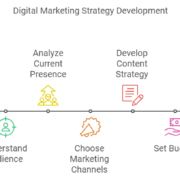
In an age where technology is rapidly evolving, businesses must adapt to survive and thrive. Off-the-shelf custom software development solutions can often fall short of addressing the unique needs and challenges faced by individual organizations. This is where custom software development comes into play—a strategic approach that enables businesses to design software specifically tailored to their operational requirements. This article delves into the benefits, development process, and transformative impact of custom software development on businesses today.
What is Custom Software Development?
Custom software development involves creating software solutions that are specifically designed to meet the distinct needs of a business or organization. Unlike off-the-shelf products, which offer generalized features for a wide audience, custom software is built from the ground up, ensuring it aligns perfectly with the company’s goals, processes, and workflows. This personalized approach allows businesses to leverage technology in a way that maximizes efficiency and enhances overall performance.
The Growing Importance of Custom Software Development
- Tailored to Specific Needs
Every organization has its own set of challenges and objectives. Custom software development provides a solution that is specifically designed to address these unique requirements. Businesses can work closely with developers to outline their needs and develop features that directly support their processes. This results in a more efficient workflow and reduces the need for unnecessary adjustments that off-the-shelf software often requires.
- Enhanced Operational Efficiency
Custom software can significantly enhance operational efficiency by automating repetitive tasks, optimizing workflows, and eliminating bottlenecks. For instance, a custom customer relationship management (CRM) system can be tailored to track interactions, manage leads, and automate follow-ups, freeing sales teams to focus on building relationships and closing deals. This streamlining of processes leads to higher productivity and allows teams to work smarter.
- Seamless Integration
Many businesses rely on a variety of software solutions for different functions, such as finance, sales, and marketing. However, off-the-shelf software can lead to integration challenges, resulting in data silos and inefficiencies. Custom software development allows for seamless integration with existing tools and systems, enabling a smooth flow of information across departments. This integration fosters collaboration and ensures that all teams are on the same page, ultimately improving decision-making.
- Scalability and Flexibility
As businesses grow, their software needs will evolve. Custom software is designed with scalability in mind, allowing for easy updates and enhancements as requirements change. Whether it’s adding new features, accommodating more users, or integrating with emerging technologies, custom solutions can adapt to meet the demands of a growing business. This flexibility ensures that organizations remain agile in a constantly changing market landscape.
- Enhanced Security Measures
Data security is a paramount concern for businesses today, especially for those dealing with sensitive information. Off-the-shelf software can be vulnerable to security breaches due to its widespread use and common vulnerabilities. Custom software offers a higher level of security, as it is built specifically for the organization and can incorporate tailored security measures such as encryption, user access controls, and compliance with industry regulations. This bespoke approach reduces the risk of data breaches and instills confidence in customers and stakeholders.
- Cost Efficiency Over Time
While the initial investment in custom software development may be higher than purchasing off-the-shelf solutions, it can be more cost-effective in the long run. Off-the-shelf software often incurs recurring costs for licenses, updates, and additional features. In contrast, custom software eliminates these ongoing expenses by providing a one-time investment that can evolve with the business. Over time, the total cost of ownership tends to be lower, resulting in a higher return on investment.
- Competitive Advantage
In a crowded marketplace, having a unique offering can set a business apart from its competitors. Custom software can provide specific functionalities that are not available in off-the-shelf solutions, allowing businesses to deliver unique services or enhance customer experiences. This differentiation can lead to increased customer loyalty and improved market positioning.
The Custom Software Development Process
The custom software development process is typically structured into several key phases to ensure the final product meets the specific needs of the business.
- Requirement Gathering
The first phase involves comprehensive discussions with stakeholders to identify the specific needs and challenges the software must address. This requirement gathering process is critical for ensuring that the development team has a clear understanding of the project scope, objectives, and desired outcomes.
- Design
Once the requirements are established, the design phase begins. This includes creating wireframes and mockups that outline the user interface and overall user experience. This stage allows stakeholders to visualize the software and provide feedback, ensuring the design aligns with their expectations.
- Development
During the development phase, programmers and developers work to build the software according to the agreed-upon specifications. This process often involves coding, database development, and application integration. Agile development methodologies are commonly employed, allowing for iterative testing and feedback throughout the development process.
- Testing
Testing is a critical step to ensure the software functions correctly and meets all specified requirements. This phase includes various testing methods, such as functional testing, performance testing, and security testing. Rigorous testing helps identify and resolve any issues before deployment.
- Deployment
Once testing is complete and any necessary adjustments are made, the software is deployed within the business environment. This stage may involve setting up the necessary infrastructure, configuring the software for use, and training employees on how to effectively utilize the new system.
- Maintenance and Support
After deployment, ongoing maintenance and support are essential for ensuring the software continues to function optimally. This includes regular updates, security patches, and enhancements based on user feedback. Ongoing support helps businesses adapt the software to their evolving needs.
Use Cases for Custom Software Development
Custom software development can be applied across a variety of industries, each with unique challenges that tailored solutions can address. Common use cases include:
- Healthcare: Custom solutions can streamline patient management, enhance telehealth services, and ensure compliance with regulations like HIPAA.
- Finance: Financial institutions can benefit from custom software for risk assessment, fraud detection, and regulatory compliance reporting.
- E-commerce: Custom platforms can provide personalized shopping experiences, manage inventory efficiently, and integrate with various payment gateways.
- Manufacturing: Custom solutions can optimize production processes, manage supply chains, and enable real-time data tracking.
Challenges in Custom Software Development
While custom software development presents numerous benefits, it also comes with challenges that organizations should be aware of:
- Initial Investment: The upfront cost for custom software development can be significant compared to off-the-shelf options, requiring careful budgeting.
- Time-Consuming Process: Developing custom software can take longer than implementing off-the-shelf solutions, necessitating patience and ongoing collaboration.
- Dependency on Developers: Organizations must maintain a strong relationship with development teams for ongoing support and updates, which can create dependency.
Conclusion
Custom software development is an invaluable approach for businesses seeking to enhance efficiency, improve security, and gain a competitive edge in their industries. By investing in tailored solutions, organizations can address unique challenges and leverage technology to drive innovation and growth. The benefits of custom software—such as scalability, seamless integration, and personalized functionality—make it a strategic choice for businesses looking to succeed in today’s dynamic market. As technology continues to evolve, custom software will remain a key driver of business transformation and success.











